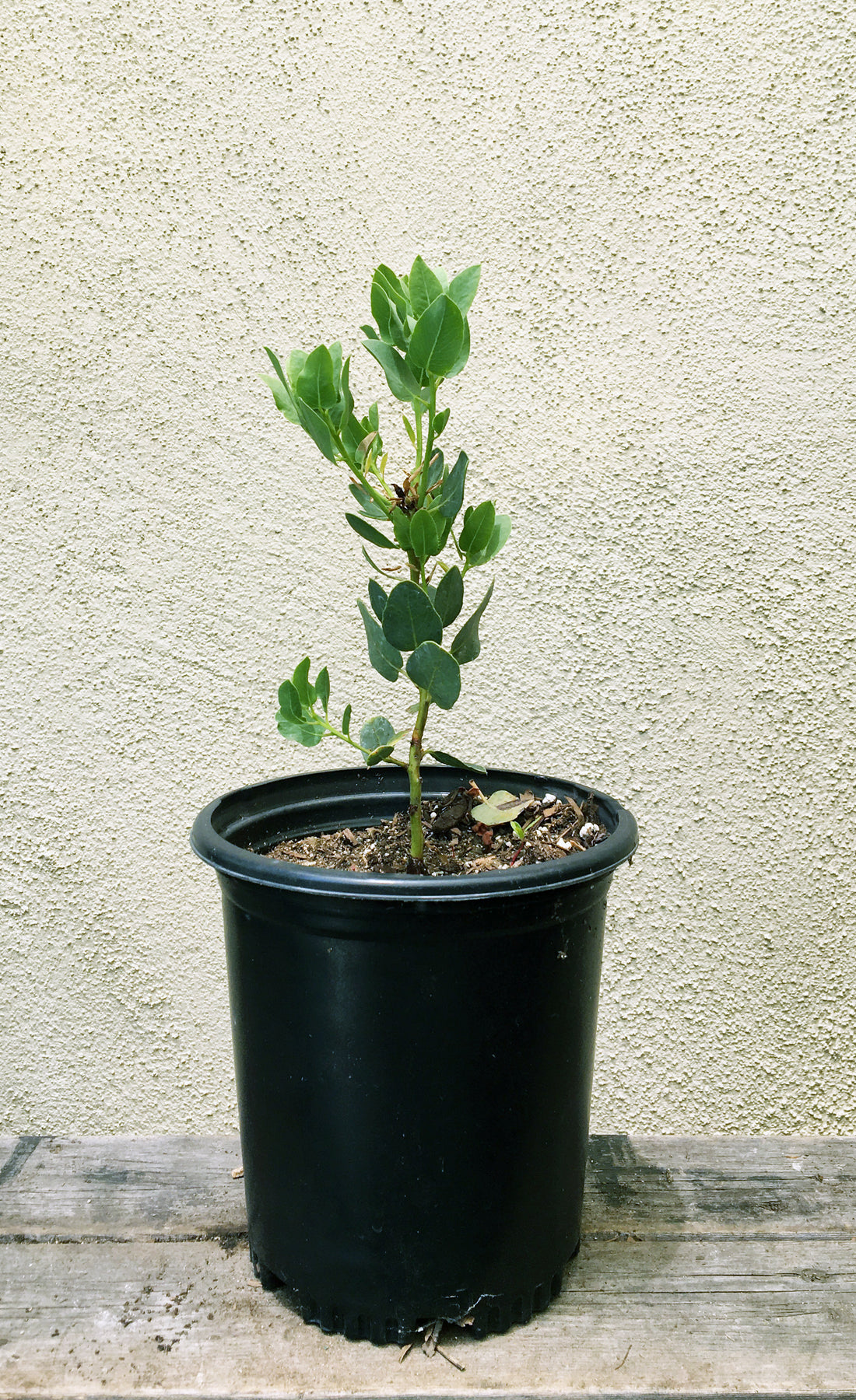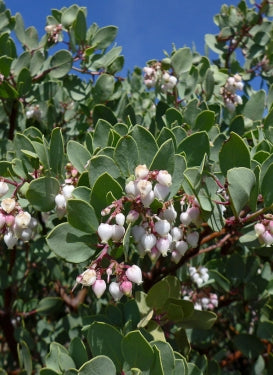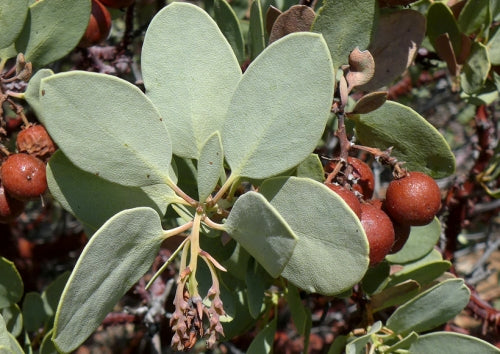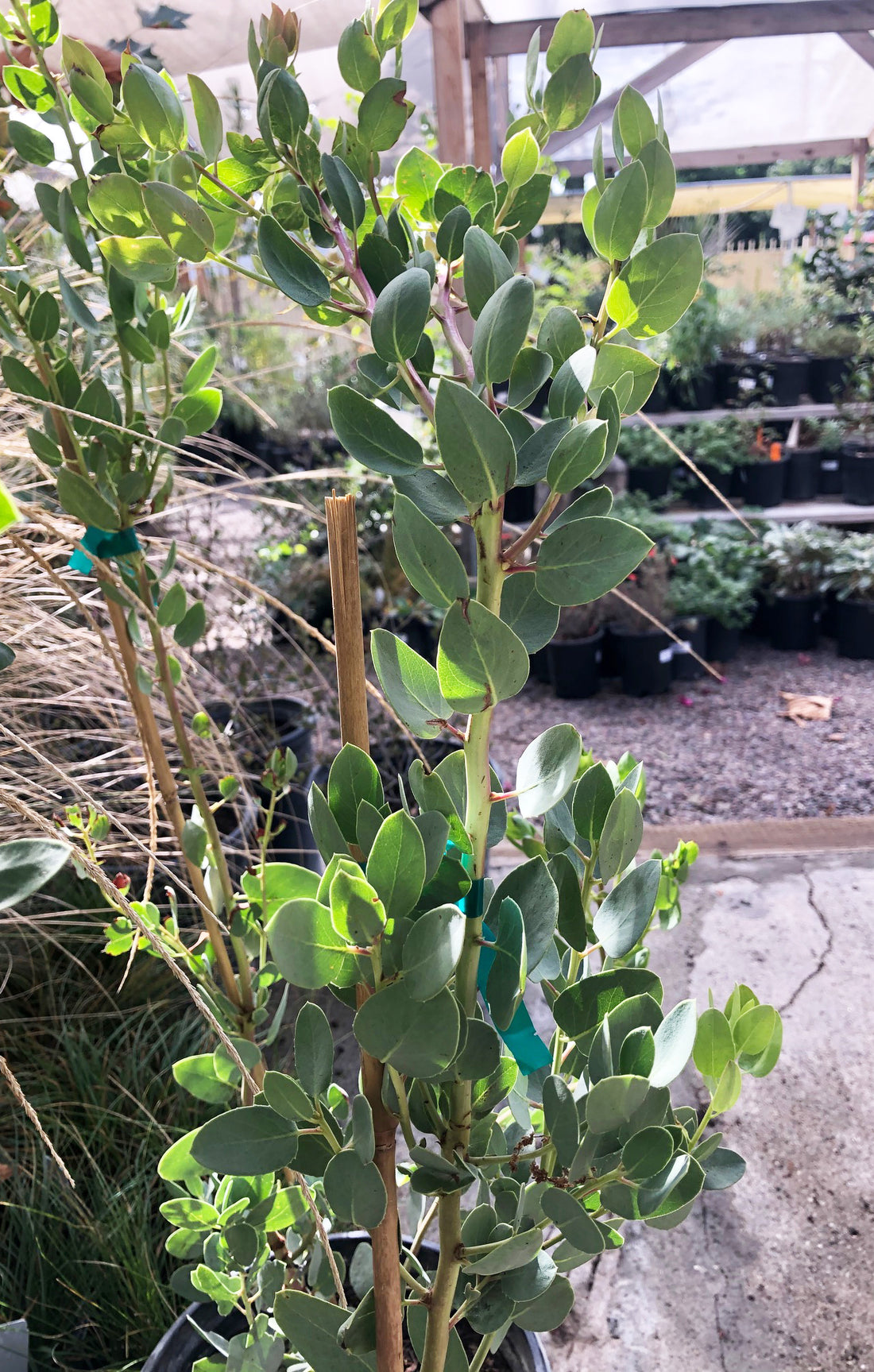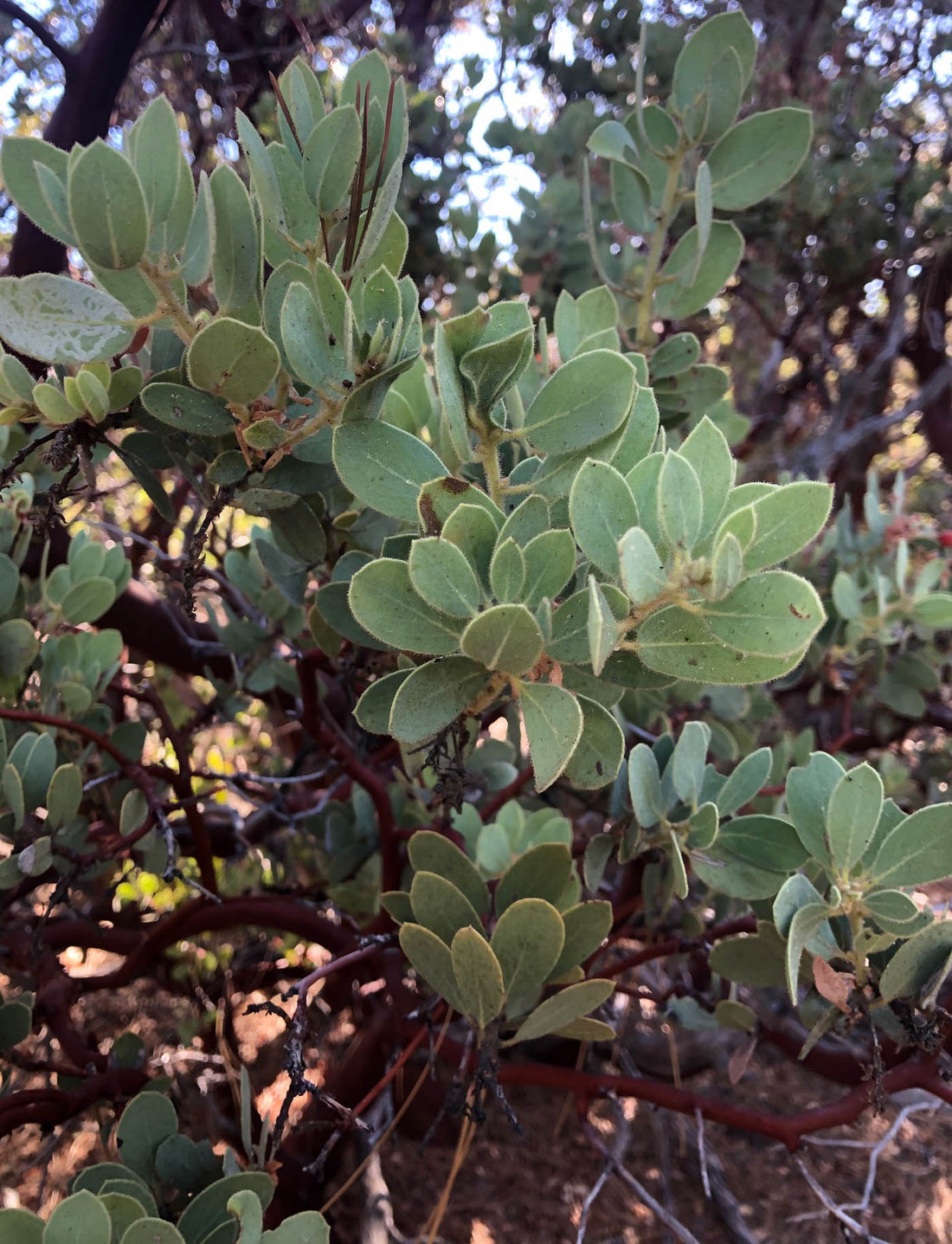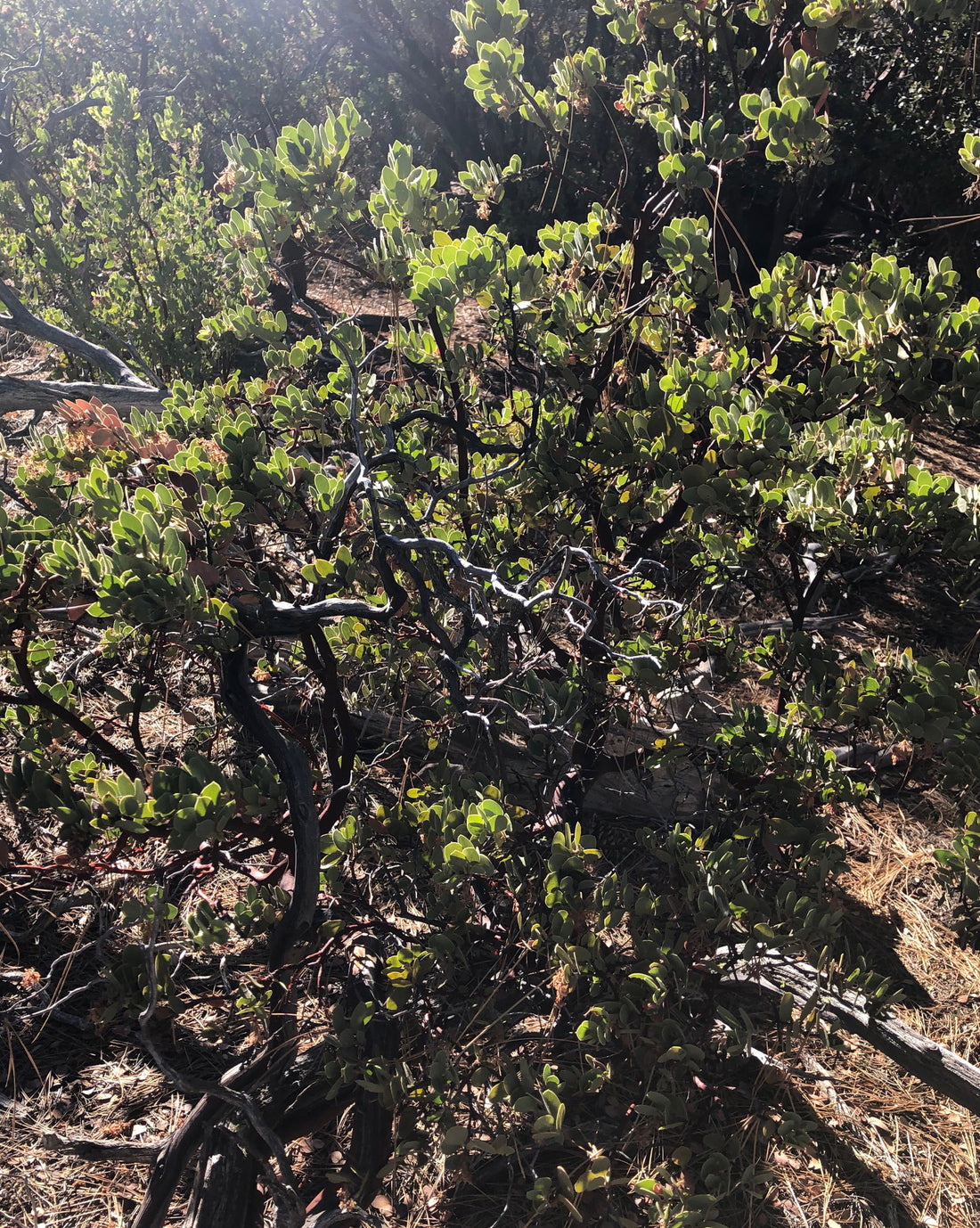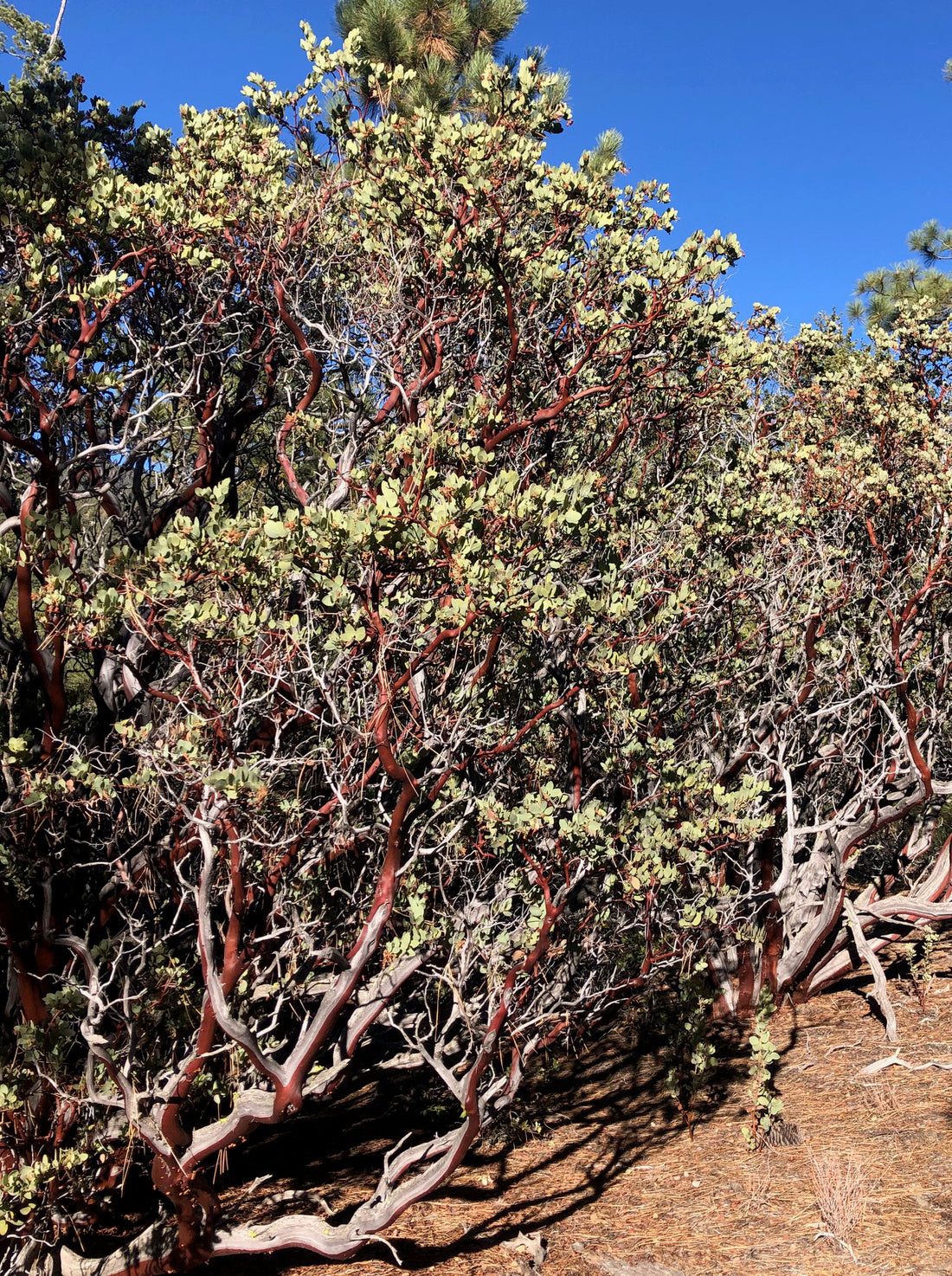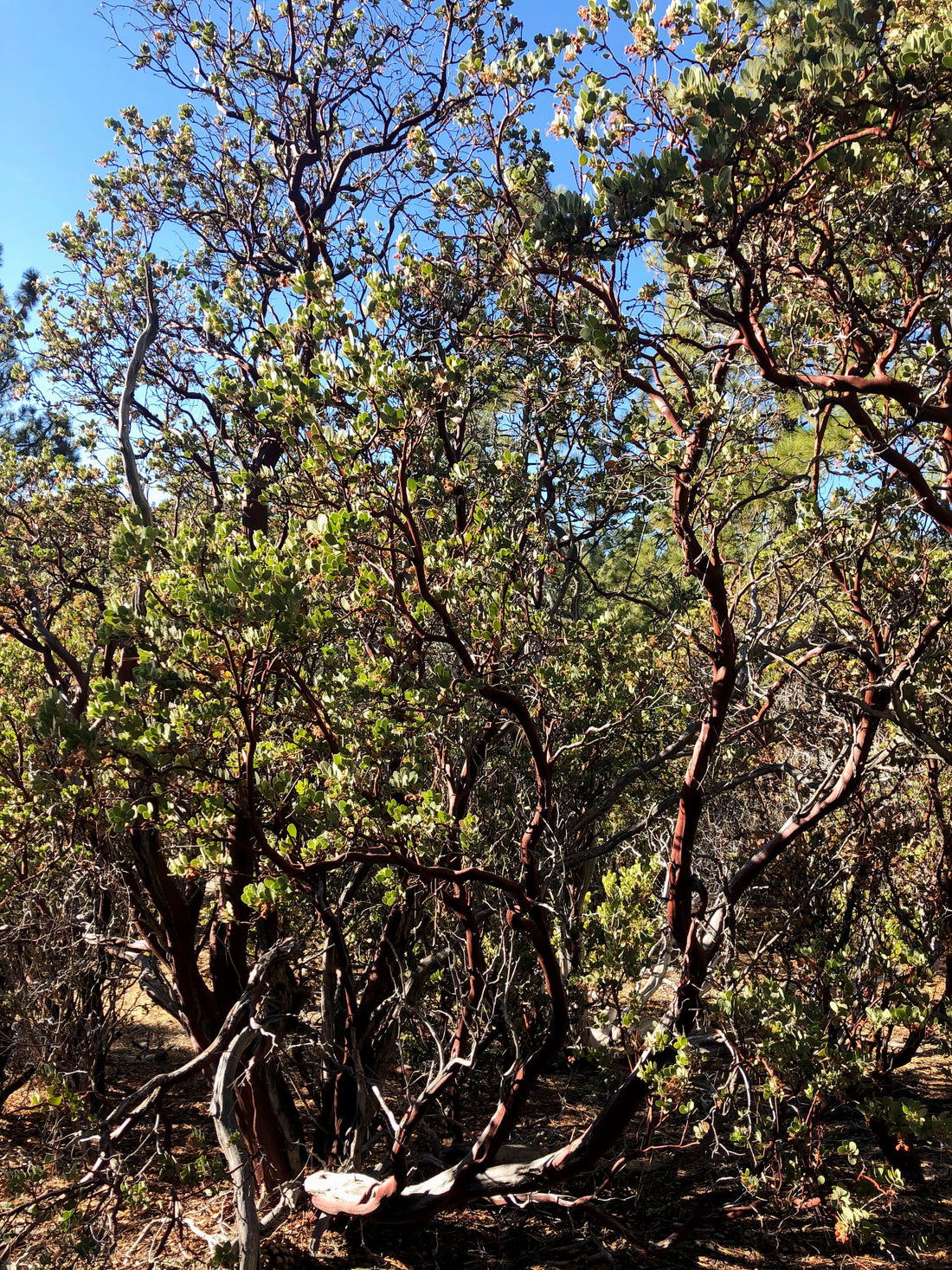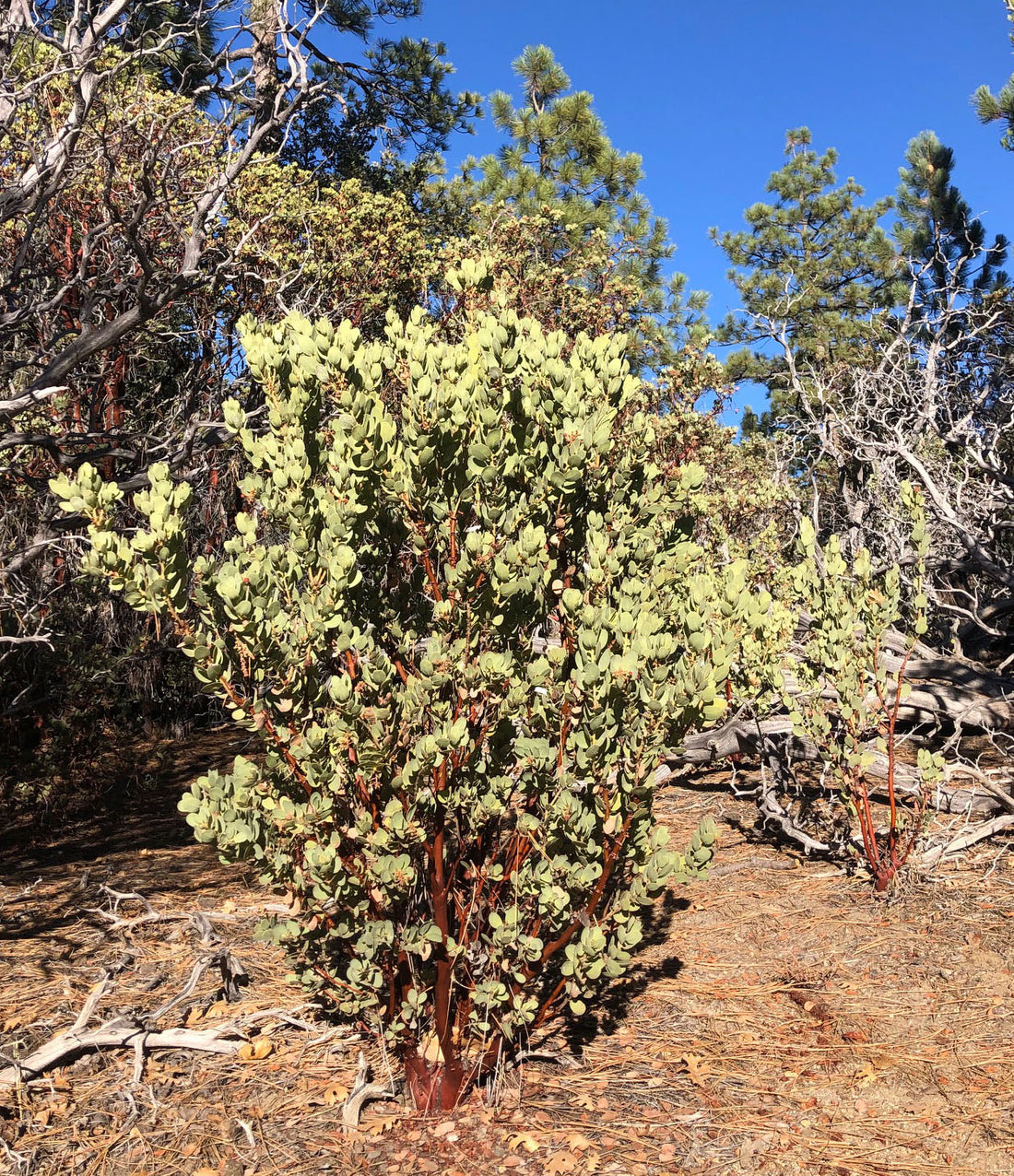
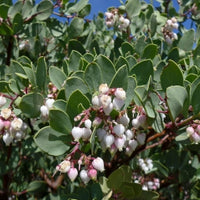
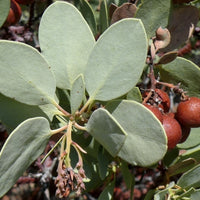

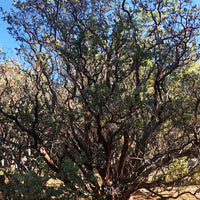
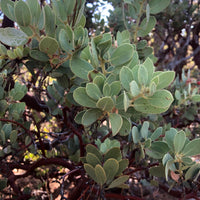
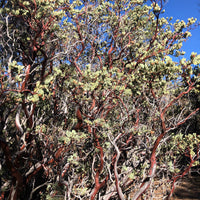
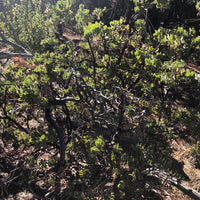
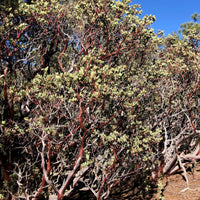
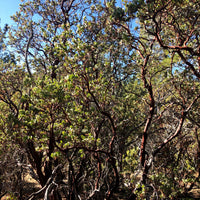
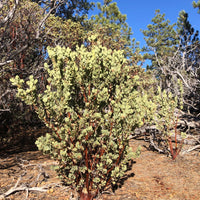
Arctostaphylos glauca (bigberry manzanita)
Big Berry Manzanita
An evergreen shrub to small tree with red-brown bark. This shrub grows slow to moderately to about twenty feet high and wide. White and pink flowers bloom in winter and spring followed by hard red-brown berries.
It is best to prune in the time when they are flowering to early summer. Each flower cluster terminates the growth of a shoot causing an irregular twiggy branching habit. It is not recommended to prune manzanitas during cool, wet winter months, this encourages fungal pathogens to spread. You can edge in late spring or early summer.
An easy California Native to grow in the Los Angeles area. For more recommendations visit our Easiest California Native Plants to grow in your garden guide.
- Full sun
- Does well in heavier soils but also excels in decomposed granite. Tolerates alkaline or serpentine soil
- Water for first year and then can exist on rainfall
- Attracts, birds, bees, butterflies, and hummingbirds
- More susceptible to red leaf spot gall near the coast
- Drought tolerant
- Fire resistant
- California Native
This content type will accept rich text to help with adding styles and links to additional pages or content. Use this to add supplementary information to help your buyers.
You can use product metafields to assign content to this tab that is unique to an individual product. Use tabs to highlight unique features, sizing information, or other sales information.
Big Berry Manzanita
An evergreen shrub to small tree with red-brown bark. This shrub grows slow to moderately to about twenty feet high and wide. White and pink flowers bloom in winter and spring followed by hard red-brown berries.
It is best to prune in the time when they are flowering to early summer. Each flower cluster terminates the growth of a shoot causing an irregular twiggy branching habit. It is not recommended to prune manzanitas during cool, wet winter months, this encourages fungal pathogens to spread. You can edge in late spring or early summer.
An easy California Native to grow in the Los Angeles area. For more recommendations visit our Easiest California Native Plants to grow in your garden guide.
- Full sun
- Does well in heavier soils but also excels in decomposed granite. Tolerates alkaline or serpentine soil
- Water for first year and then can exist on rainfall
- Attracts, birds, bees, butterflies, and hummingbirds
- More susceptible to red leaf spot gall near the coast
- Drought tolerant
- Fire resistant
- California Native

